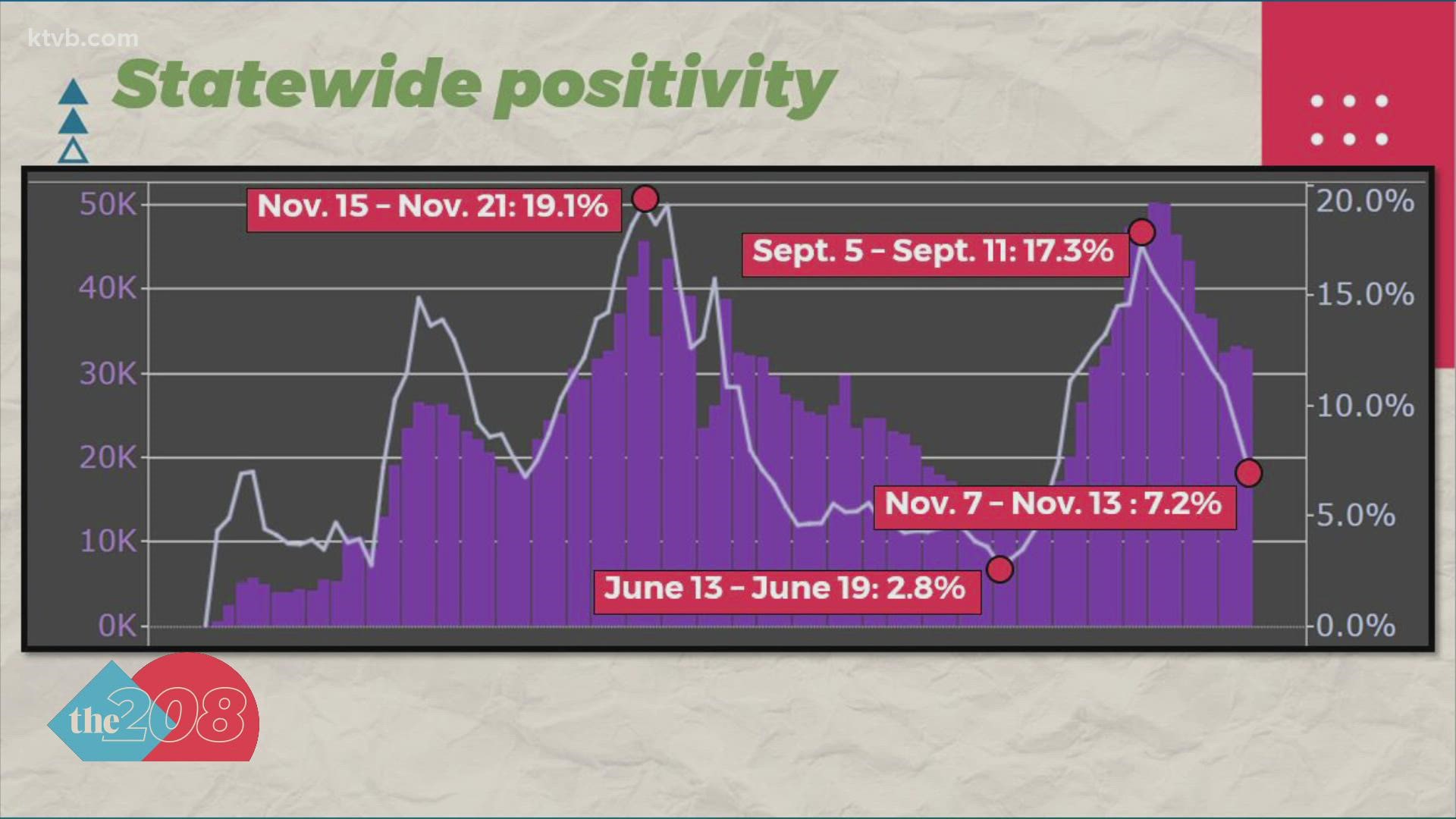BOISE, Idaho — Idaho has deactivated crisis standards of care for all regions except North Idaho as the COVID-19 pandemic's burden on hospitals begins to ease, the Department of Health and Welfare announced Monday.
Crisis standards of care - under which doctors and healthcare workers may ration medicine, beds, ventilators, and other treatment to those deemed likeliest to survive - were put into place in September amid a surge in COVID-19 cases and hospitalizations that strained the ability to care for all the sick.
IDHW Director Dave Jeppesen said that although hospitals continue to deal with high numbers of COVID-19 patients, the surge is no longer outstripping resources in most of the state.
Crisis standards of care remain in effect in the Panhandle Health District, including Boundary, Bonner, Kootenai, Benewah, and Shoshone counties.
In the rest of the state, hospitals are generally operating under "contingency operations," meaning they are still stretched thin under an unusually high number of patients, but are not at an emergency level. The process to begin deactivating crisis standards began after healthcare systems started reporting that they were now in contingency operations. The situation at hospitals across the state has been monitored daily, officials said.
Hospitalizations have been trending downward since a Sept. 24 peak of 793 hospitalized COVID-19 patients statewide. On Nov. 17, the last day from which IDHW's COVID-19 dashboard is displaying data, 347 people were hospitalized with COVID-19.
At St. Luke's, chief medical officer Dr. Jim Souza said, all of the surge units have been closed and there is room in the ICU once more. Staffing and supply levels are adequate, he added, and the hospital is encouraging healthcare workers to take "much-needed" time off.
Still, Souza warned, the pandemic is not over, and the dropping hospitalization numbers could quickly rebound into another surge.
"We are not sharing a 'mission accomplished' message," he said. "We don't believe this will be our last surge of COVID. I think all you need to do is look to North Idaho to see how volatile the situation remains."
COVID-19 patients still make up 21% of adult hospital admissions, and 40% of ICU admissions at St. Luke's, Souza said. The health system is also working hard to tackle the backlog of non-emergency surgeries - between 7,000 and 8,000 procedures - that were tabled during the height of the crisis.
Health and Welfare officials noted that the situation at each hospital remains "fluid," and that the state will continue to provide resources, including healthcare workers contracted through FEMA and other federal programs, to Idaho healthcare systems.
Dr. Karen Cabell, Kootenai Health's chief physician executive, said in a statement that the downward trend in COVID-19 admissions and community positivity rates "have given us reasons to be cautiously optimistic."
"That being said, we currently have 58 patients being treated for COVID-19 with 26 of them requiring critical care, and for Nov. 1-22, there have been 33 COVID-19 deaths at Kootenai Health," she continued. "We also want to consider the impact the holidays could have on the spread of COVID-19, and we are still encouraging the community to continue to take necessary precautions to protect themselves and loved ones against the spread of serious illness from COVID-19 and other viruses."
Souza expressed deep gratitude for healthcare workers, who he says saved thousands of lives while coping with mounting stress, trauma, and death.
"The collective human effort that they pulled off in Idaho over the last five months is nothing short of remarkable," he said.
Saint Alphonsus Executive Medical Director Dr. Patrice Burgess touted the superb communication between hospital systems that helped get COVID-19 patients into beds at other facilities when one hospital was stretched too thin to admit them.
Burgess noted that COVID-19 cases have dropped off, then came roaring back, previously during the pandemic, and urged residents not to drop their guard when it came to washing their hands, wearing masks, and taking other precautions. Idahoans should get vaccinated if they have not already done so, and those eligible should also strongly consider getting the COVID-19 booster, she said.
"It is really a matter of our ability to get a significant portion of our population vaccinated, and then also our ability to adhere to those other precautions as well," she said. "That is what I see as our way out of this, and it is hard to watch the polarization around some of these measures that are really just basic science."
Souza added that now that the strain on the health system has eased, St. Luke's will begin enforcing the employee vaccine mandate for influenza and COVID-19.
Of St. Luke's 17,000 employees, only about .6% are "non-compliant" - as in, have not received the vaccine or been granted an exemption. About 8% or 9% of workers received an exemption, he said.
"There is a light at the end of the tunnel," Burgess said. "I don't yet know exactly when that is, but I do think we will get there."
At KTVB, we’re focusing our news coverage on the facts and not the fear around the virus. To see our full coverage, visit our coronavirus section, here: www.ktvb.com/coronavirus.
Facts not fear: More on coronavirus
See our latest updates in our YouTube playlist:

